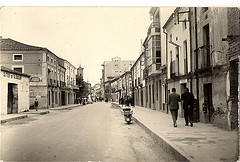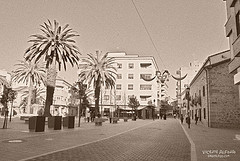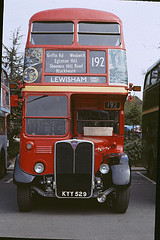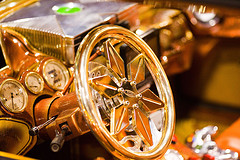4. Planes are safer than cars (comparatives and superlatives)
As we now know, adjectives are used not only to describe things, people and places, but also to compare them. Remember that we make comparisons by adding suffix -er to short adjectives and using the adverb more in front of longer ones (and there are 3 irregulars). We will study it in depth later in the unit. Now, just have a look at the following chart to make sure you recognize the comparative sentences that appear in the text in Section 1.
 |
|
 |
| By Vicente Alfonso. C. Commons |
By Vicente Alfonso. C. Commons |
| Comparative | Conjunction |
|
older newer longer shorter |
than |
|
more interesting more expensive |
than |
Have a look at the photos above. We could say, for example: The photo on the left is older than the photo on the right or The picture on the right is more recent than the picture on the left.
Important
Remember that comparison is a property not only of adjectives but also of adverbs. It describes the degree to which the modifier (adjective or adverb) modifies its complement (nouns in the case of adjectives and nouns, other adjectives and even other adverbs in the case of adverbs).
We will study two degrees of adjectives and adverbs:
| Comparative | Superlative |
| safer / more interesting | safest / most interesting |
| more friendly | most friendly |
Solved exercise
 |
| By Elsie esq. C. Commons |
 |
| By VOD Cars. C. Commons |
Remember that there are several degrees of comparison. So, apart form comparisons of superiority, we can also find comparisons of equality and inferiority. In them, we use the positive adjective or adverb to make or draw the comparison (e.g. Coaches are as fast as cars, Paco speaks English less fluently than Sonia).
Find all the comparisons in the text in Section one. Pay attention to all kinds of comparisons.
Read the paragraph below and fill in the missing words using the comparatives of the words in the box.
|
rich - big - expensive - fast - great - safe |
Further knowledge
There are far more means of transport than the ones mentioned up to now. Click here to get a good list of them. And here you'll be able to get another list and print exercises to improve your vocabulary on the subject. Finally more vocabulary and naturally speaking useful phrases may be learnt by clicking here.
Curiosity
Driving on the wrong side?
 |
| By Thomas Hawk. C. Commons |
Surely you've wondered why in the United Kingdom and other countries such as Japan, Australia or New Zealand people drive on the left. Over the centuries, several explanations have been provided, the most frequent being that the British driving pattern derives from days of horses and horsemen. Taking into account that most people are right-handed, it seemed reasonable that a horseman who would meet another horseman would be in the most advantageous position if he would need to draw his sword quickly to defend himself against the on-coming horseman. It seems that Pope Benedict issued a Papal Edict in the year 1300 A.D. requiring all people to keep to the left on roadways.
Under King George III, the Government also issued a Highway Act (1773) which recommended people keep to the left on public roadways and streets.
Countries that became part of the British Empire adopted this keep-left rule.